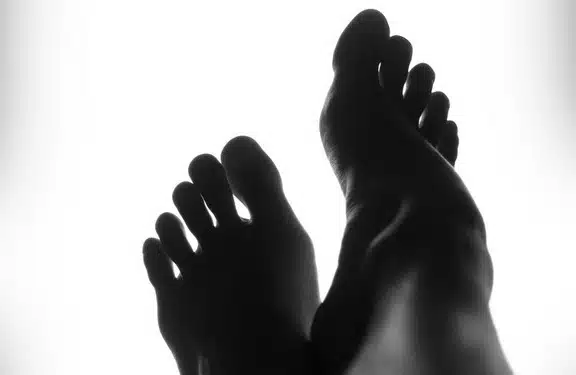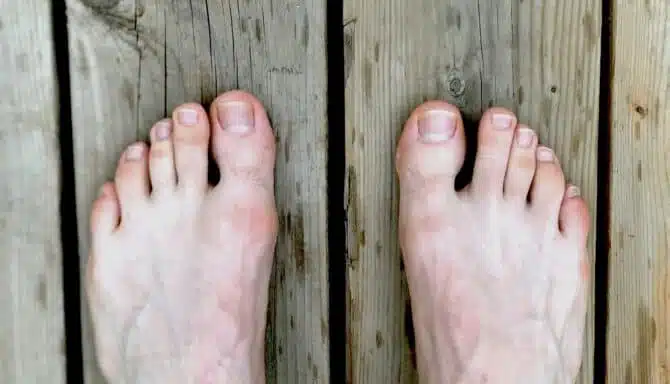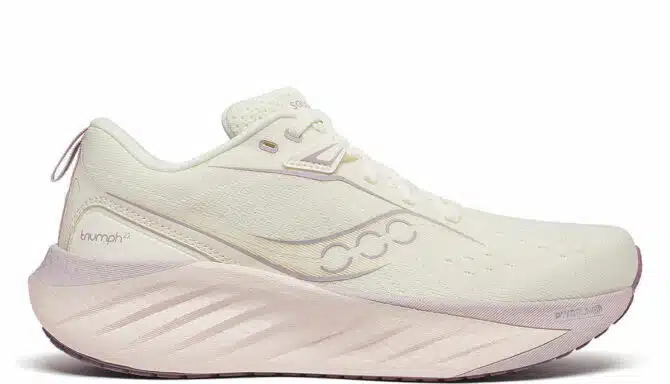Our legs are a complex and intricate system of bones, joints, and muscles. Everything is interconnected in some way.
Muscles and joints rely on each other to perform properly, and to provide the necessary foundation for our body. Our habits, genetics, and environment all affect our feet. With so many different possibilities for foot conditions to arise, it’s important to remember that correlation is not causation.
Just because we do one thing, does not necessarily mean it causes another. To help clear the air over a sample of common foot myths, we decided to debunk a few of them below.
1. Flat feet are bad
About 30% of the population lives with flat feet.
Flat feet are defined as a postural deformity in which the arches of the foot collapse. As a result, the entire foot makes contact with the ground. The foot is characterized by a very low arch, and can other foot conditions because of the leg’s compensation.
Flat feet can develop in one foot, or both, depending on your body’s development.
According to Harvard Medical School, even in adulthood, 15% to 25% of people have flexible flatfeet. Most of these people never develop symptoms. For those with what’s called rigid flat feet, several measures can be taken to reduce pain and live comfortably with flat feet. These include:
- Custom orthotics that artificially raise the arch and provide support
- Strengthen and stretch your calf as this reduces the pressure and load on your arches
- Supplement some high-impact exercise with low-impact activities like swimming, cycling, or spinning
- Anti-inflammatories
- Wearing slippers or supportive footwear inside instead of walking around barefoot
2. Wearing heels causes all of women’s foot problems
Additionally, a common misconception is that high heels cause bunions. This isn’t true. Heels aggravate bunions but are likely not the cause.
However, excessive heel usage can result in a few common foot conditions: Corns, Hammertoe and Calluses. Additionally, you’re at a greater risk of osteoarthritis since you may lose fat under your foot.
According to WebMD, you can prevent certain foot conditions while continuing to wear heels. Some of these preventative measures include:
- Get the well-fitted high heel
- Use silicone metatarsal pads for under your feet
- Wear a thicker heel for stability
- Pay attention to the “slope” or “pitch” of the heel
- Wear open-toe high heels to relieve pressure on corns and calluses
3. A bunion is just a bump
A bunion may look like just a bump. However, that’s another in the list of foot myths. If only it were that simple…
Depending on the cause, your habits may worsen the condition. Maybe you wear shoes with a narrow toebox. Without correction, bunions can get a lot worse over time, turning just a bump into severe pain.
A Bunion, or hallux valgus, is a bony protrusion that forms at the site of the large joint that connects your big toe to your foot. As you can expect, without addressing the cause of bunions, the toe angle’s alignment can sharpen, causing a larger bump.
It should be noted that bunions can be hereditary, in which case you might be doing everything right. In this instance, continue to practice proper foot habits like:
- Footwear modification, i.e., avoiding tight shoes with a narrow or stiff toe box.
- Anti-inflammatory medications
- Bunion splints
- Bunion aligner
- Therapeutic taping
- Supportive insoles or custom orthotics
You should consult a foot specialist to see whether or not action needs to be taken.
4. Foot pain is the result of getting old
Foot conditions like osteoarthritis are common in older people. Osteoarthritis is a generative joint disease characterized by both a breakdown of cartilage and a build-up of osteophytes.
However, young people are not immune to the foot conditions of the elderly. If you train at a high level and participate in high-impact sports, you may experience osteoarthritis earlier in your life, even in your 20s. Common areas for osteoarthritis include the big toe joint, knees, and hips.
Because osteoarthritis is a degenerative disease, the damage that’s been done is irreversible. The damage to the cartilage between your joints has been done. If this is, in fact, the case, physical therapy is the best course of action. Common treatments include functional improvements – like stretching for a range of motion – and managing symptoms like with rest and ibuprofen.
5. Surgery will fix foot problems
Surgery can help fix certain foot conditions, but non-invasive options may work equally well, if not be more effective.
There are several factors to consider when deciding on foot surgery:
- Necessity
- Success rate
- Cost
- Recovery time
- Long-term effectiveness
Certain progressive conditions like hallux rigidus, bunions, and a ruptured Achilles may require surgery to correct the inherent problem. However, physical therapy can also improve quality of life. Proper orthotics, avoiding high-impact exercise, proper footwear, and strengthening can help limit pain associated with certain foot conditions.
However, surgery removes the bone portion of the injury. For those with Hallux Rigidus, the Bone Spur contributes to the toe’s stiffness. The range of motion won’t improve without surgery. Although, the worsening of the condition can be slowed with physical therapy as mentioned above.
For those with a Bunion, you’ll want to explore All Non-Invasive Measures before deciding on surgery. If you have explored all options, surgery may be an option. Typically, those who experience significant pain, have severe toe deformities, and have chronic inflammation are the likely candidates for surgery. Bunion surgery (of which there are a few) can include several correct measures:
- Realigning the metatarsophalangeal (MTP) joint at the base of the big toe.
- Pain relief.
- Correcting the deformity of the bones, especially if your big toe is drifting inwards towards your second metatarsal.
If you’re unsure about foot conditions, toenail conditions, or skin conditions, contact us at Feet First Clinic to set up an appointment. You can do that below, or by Contacting Us Here!










